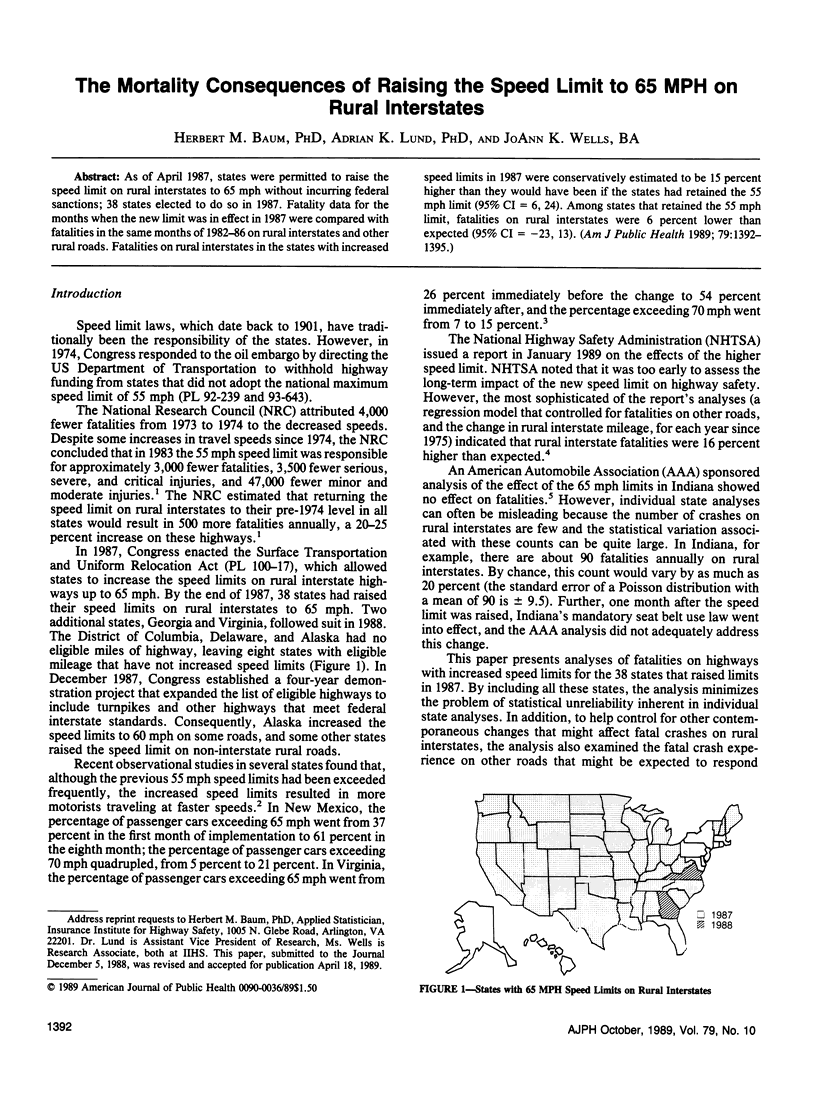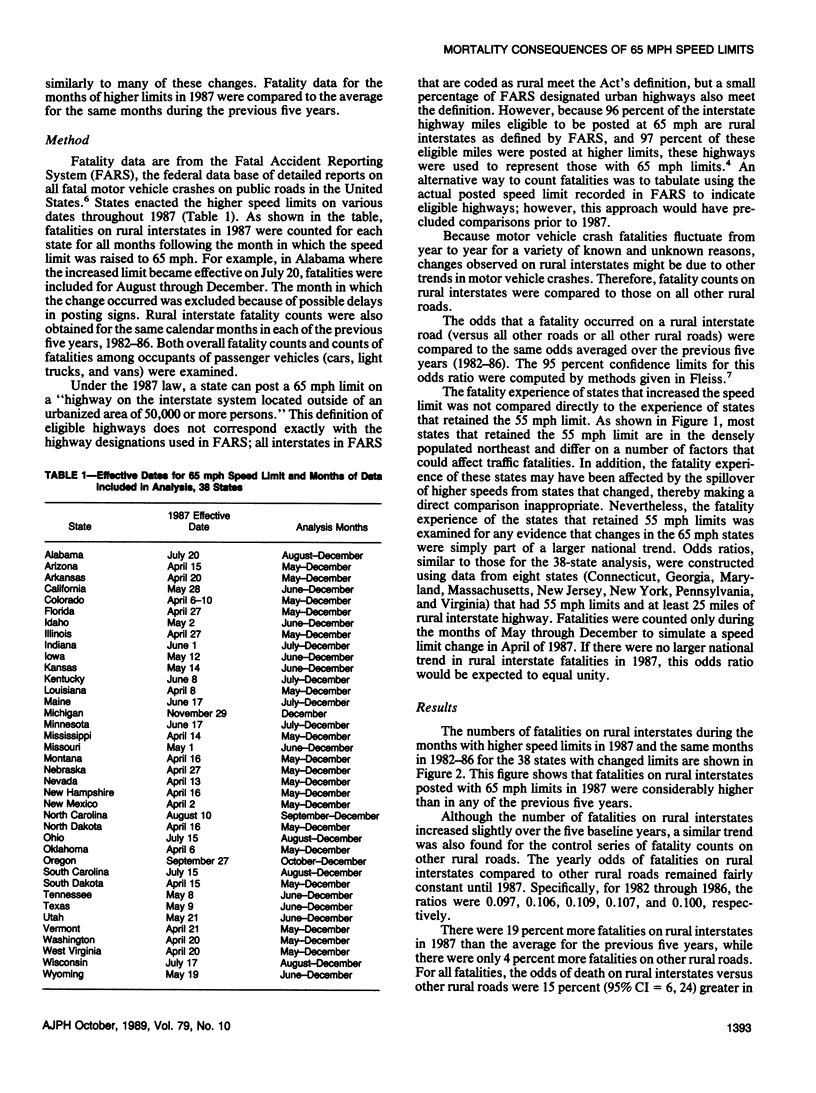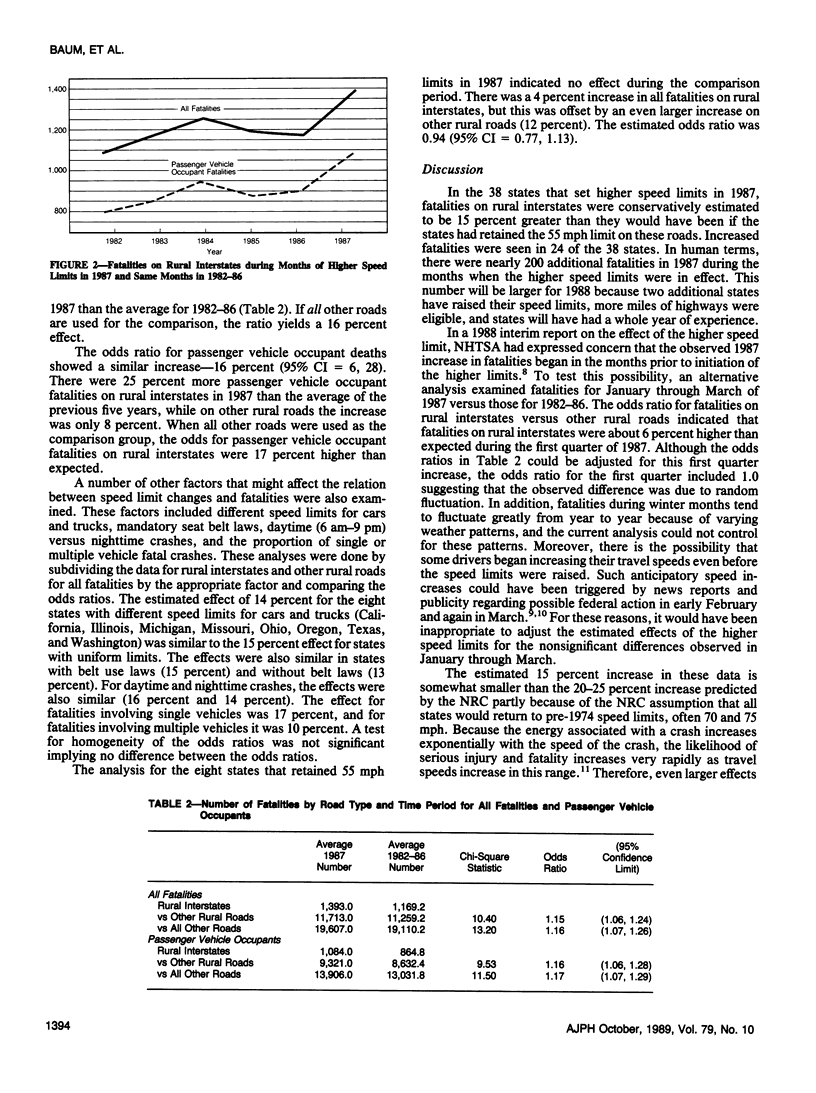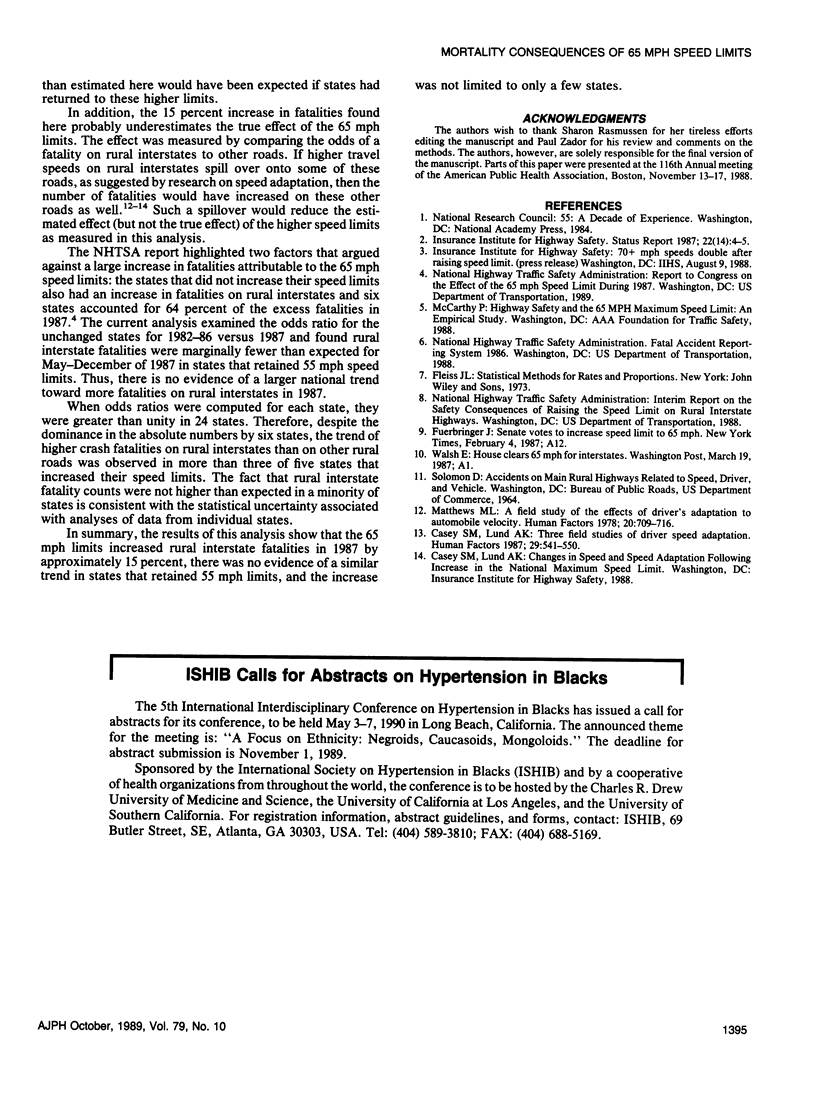Abstract
As of April 1987, states were permitted to raise the speed limit on rural interstates to 65 mph without incurring federal sanctions; 38 states elected to do so in 1987. Fatality data for the months when the new limit was in effect in 1987 were compared with fatalities in the same months of 1982-86 on rural interstates and other rural roads. Fatalities on rural interstates in the states with increased speed limits in 1987 were conservatively estimated to be 15 percent higher than they would have been if the states had retained the 55 mph limit (95% CI = 6, 24). Among states that retained the 55 mph limit, fatalities on rural interstates were 6 percent lower than expected (95% CI = -23, 13).
Full text
PDF



Selected References
These references are in PubMed. This may not be the complete list of references from this article.
- Matthews M. L. A field study of the effects of drivers' adaptation to automobile velocity. Hum Factors. 1978 Dec;20(6):709–716. doi: 10.1177/001872087802000608. [DOI] [PubMed] [Google Scholar]
- Napalkov P. N., Kachurin V. S., Ivanova T. A. Khirurgicheskaia taktika pri ostrom kholetsistite. Sov Med. 1974;0(4):11–17. [PubMed] [Google Scholar]


